THREAD: Did a tour of the pop-up #StreetSpaceLDN infrastructure in @cityoflondon yesterday. With all the construction & utilities work, it’s hard to separate Covid works from others, but here goes
We’ll start with these wonderful 15mph pedestrian prioritiy signs
We’ll start with these wonderful 15mph pedestrian prioritiy signs
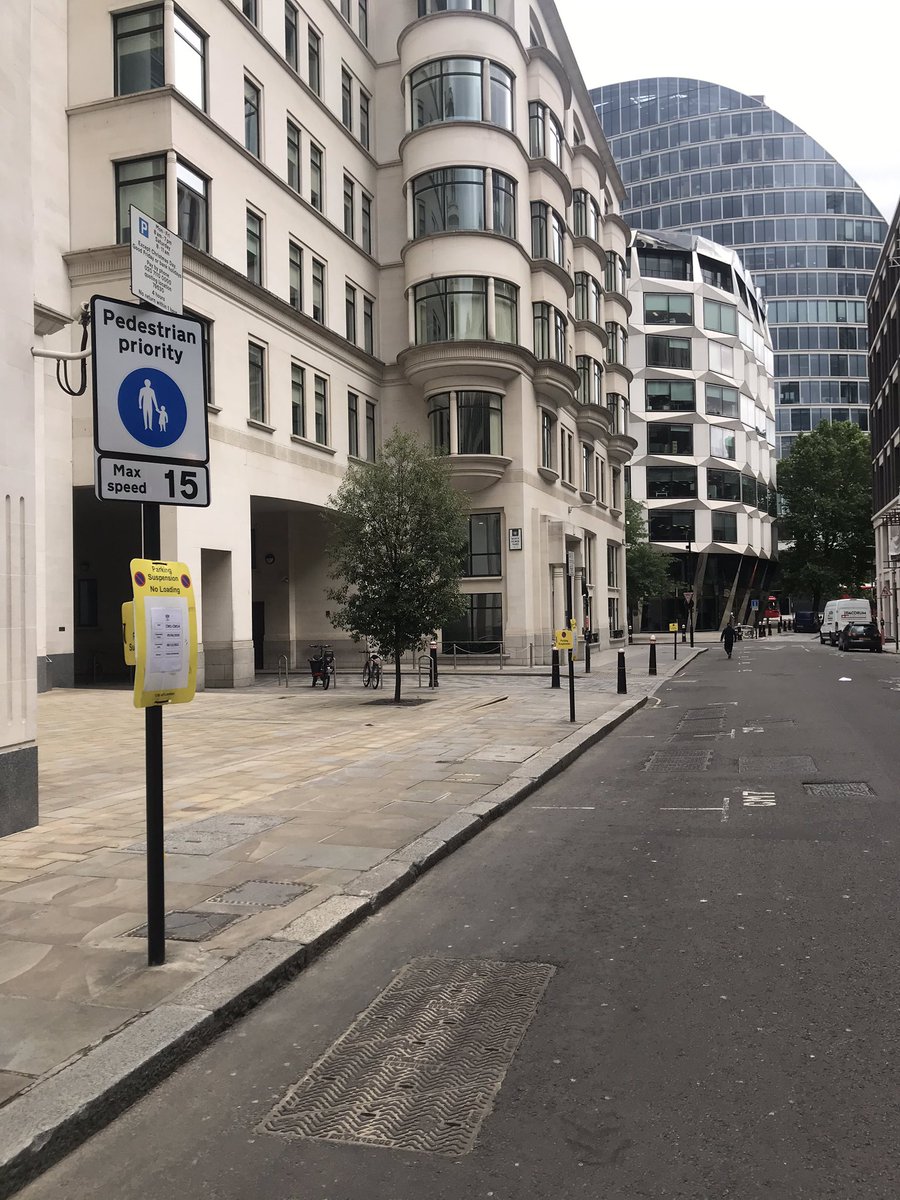
Beech Street has been closed to non-electric vehicles, with complementary closures in the area forming the basis of a low traffic neighbourhood at the boundary with @IslingtonBC 

Quite a lot of parking has been suspended to make it easier for pedestrians to spill into the carriageway on filtered streets 
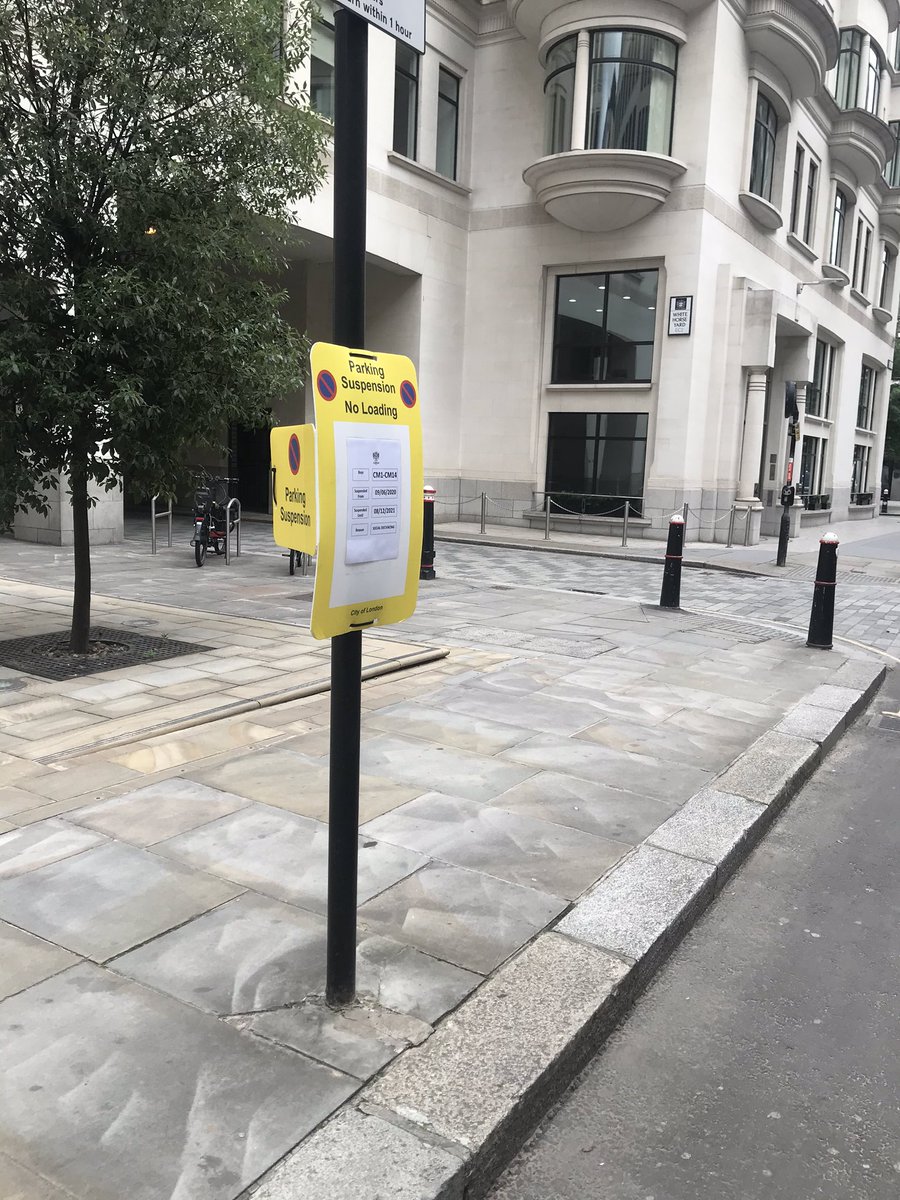
Cheapside has been closed for utility works, but in textbook @MBCyclingTM fashion, access has been retained for pedestrians and cycles. As far as I understand, Cheapside will remain access-only even once the utility works are complete 

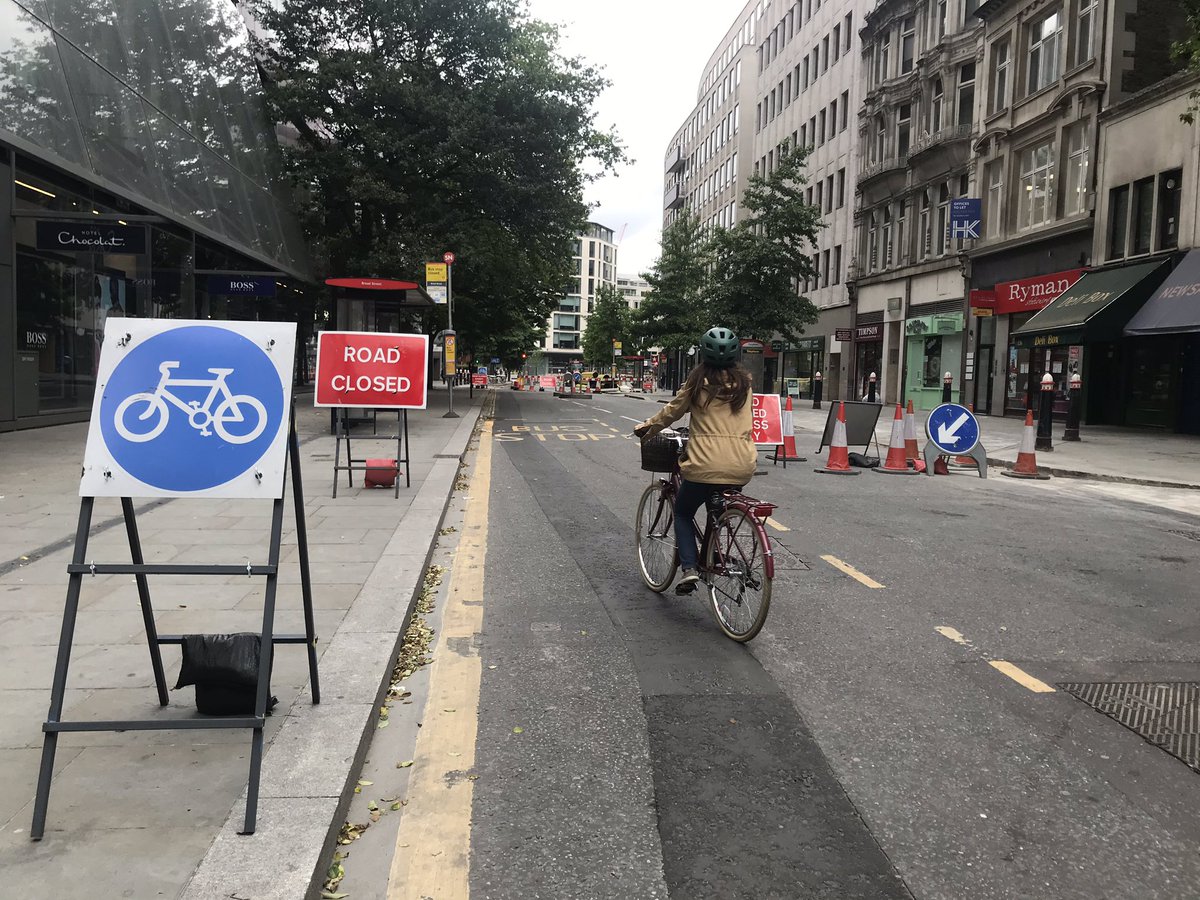

The footway widening works at Bank continue, with some questionable bollard locations on the tactile paving 

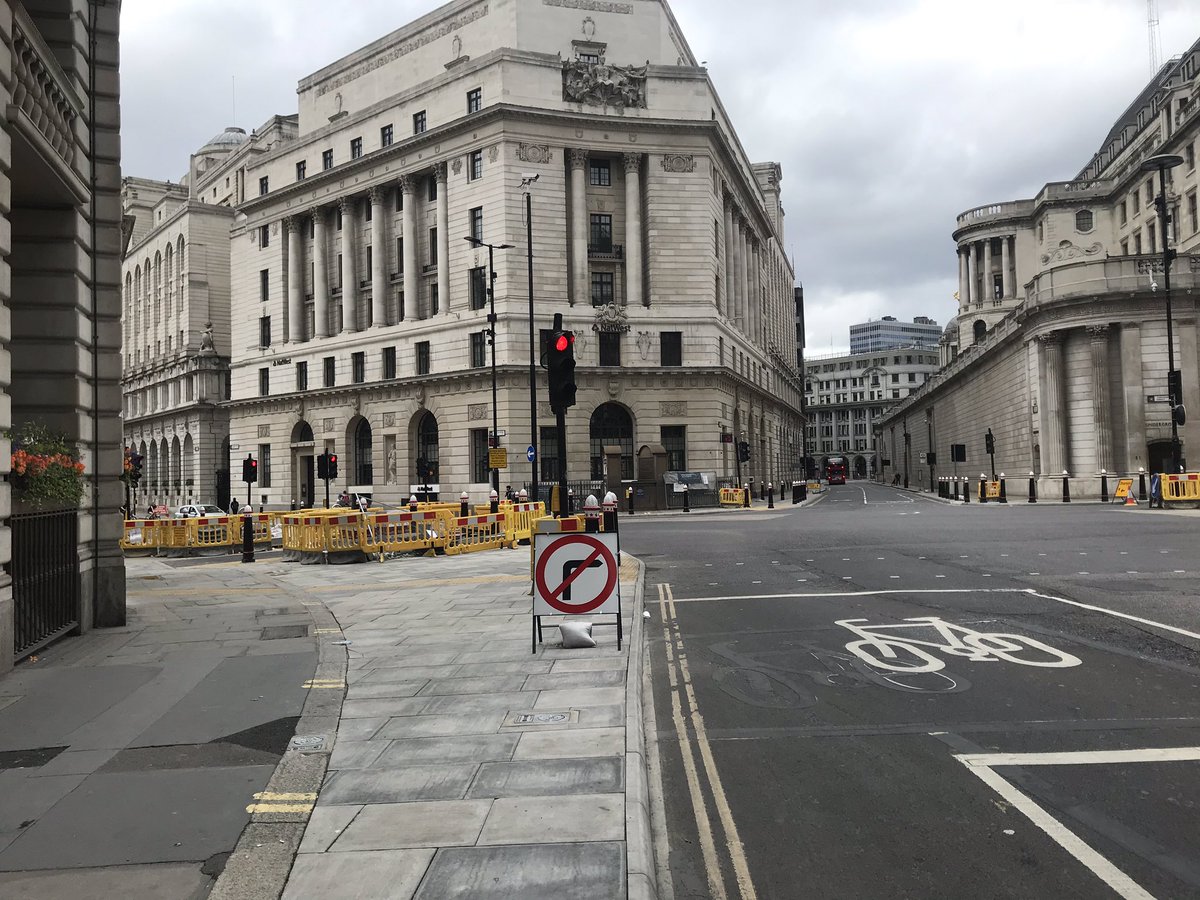
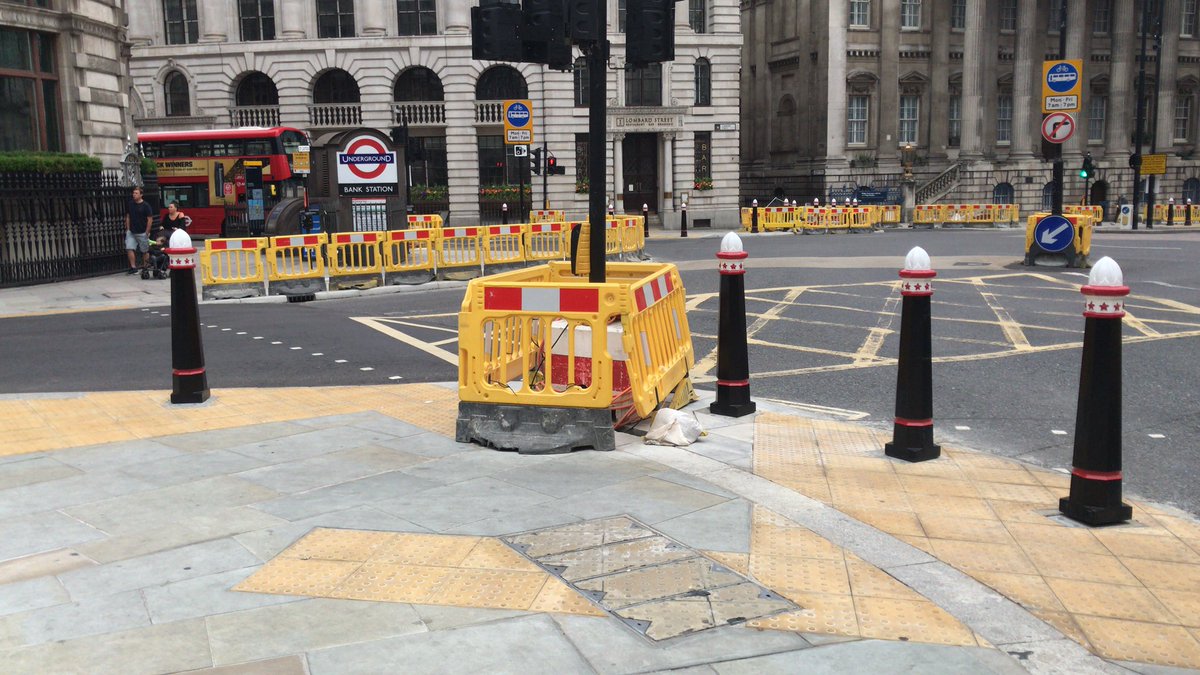
In the surrounding area, quite a few streets have been converted to one-way for general traffic, with widened footways and contraflow cycling with cone protection. No protection at junctions 



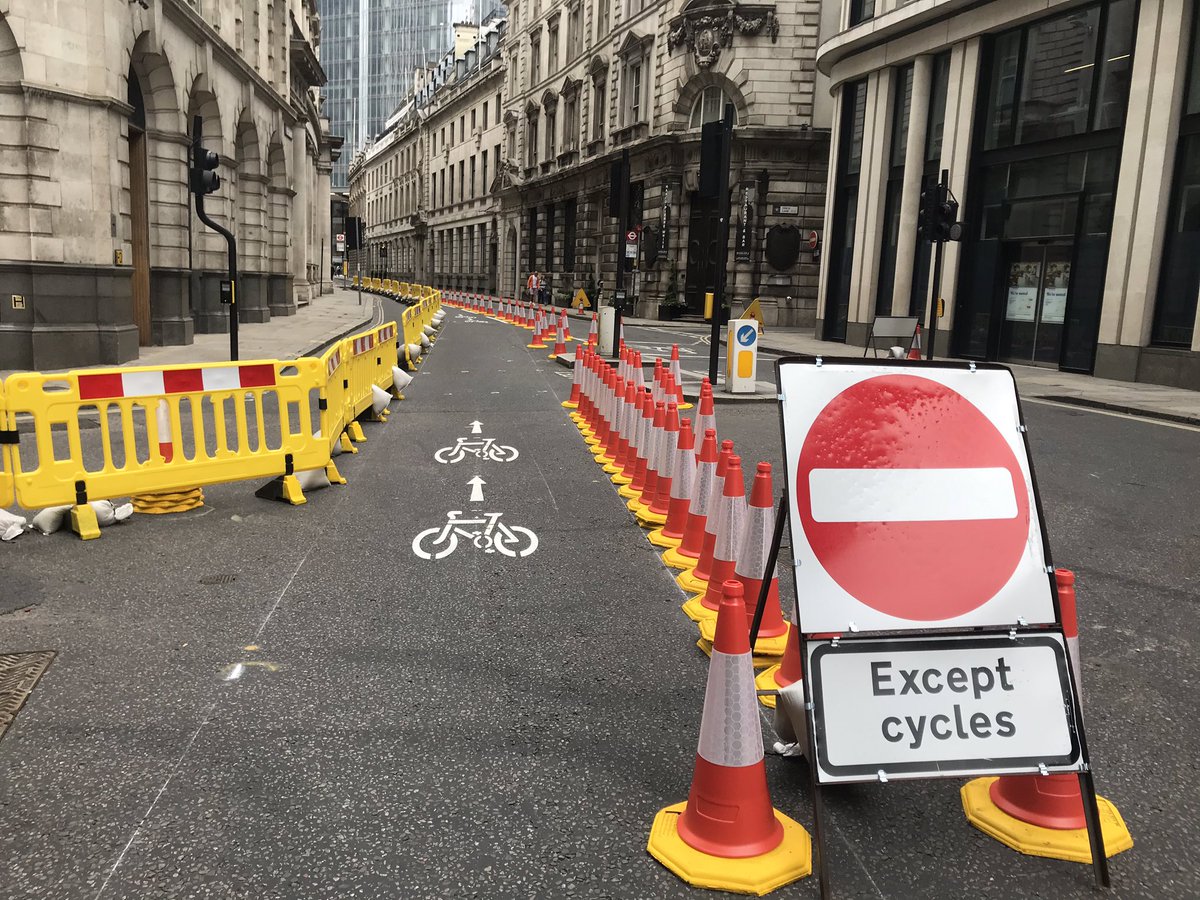
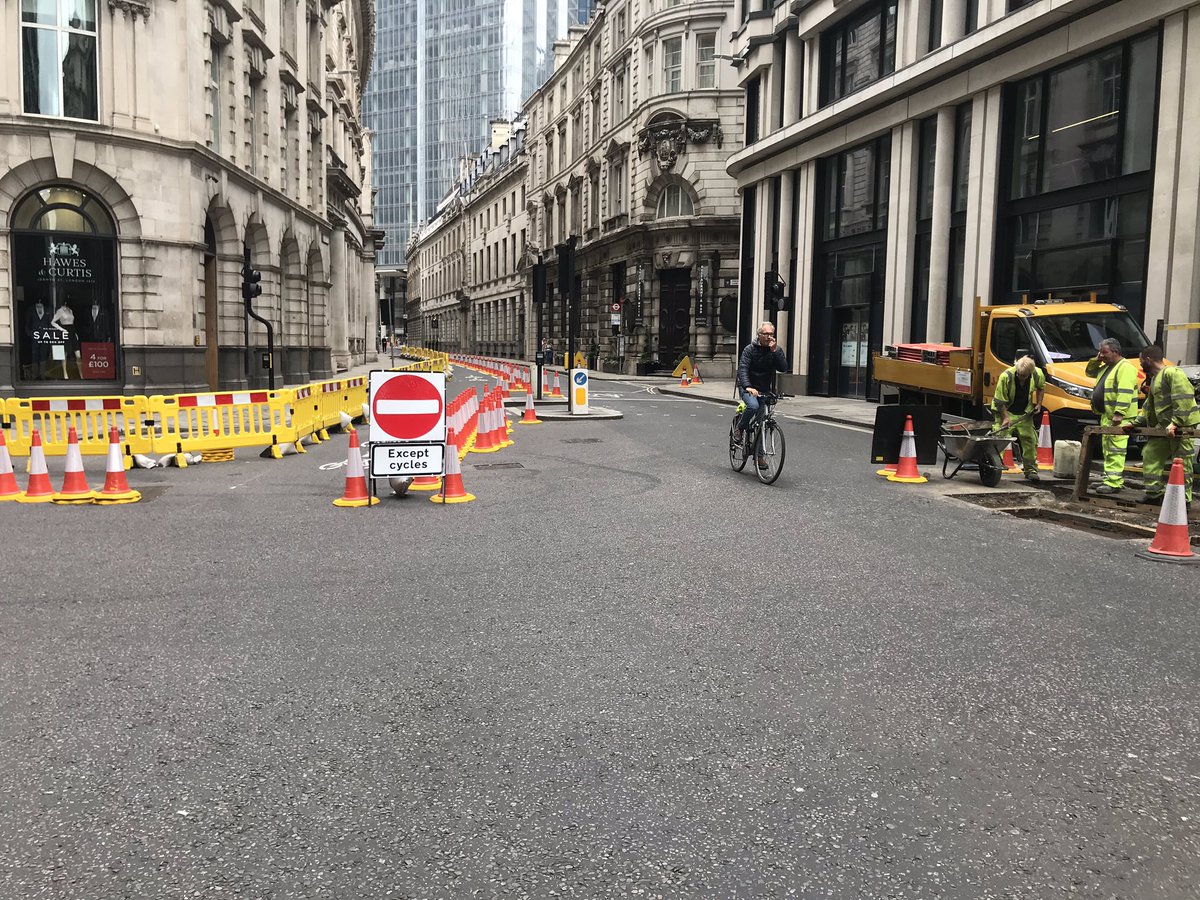
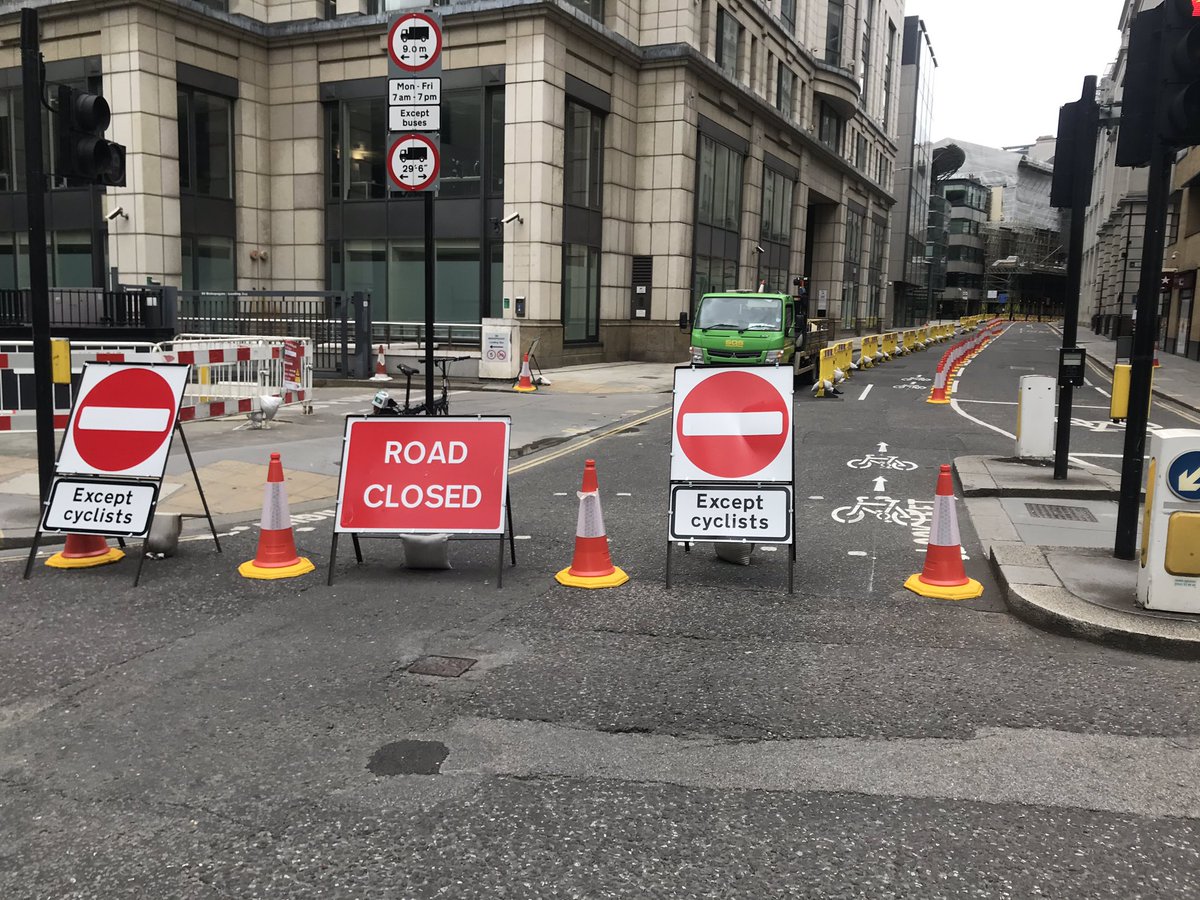

More of the same. In this area, with low speeds, cones seem to do the job for now BUT they’re pretty horrible and don’t provide actual protection. Most ped barriers have gaps, but it doesn’t feel like a great healthy streets experience. When and to what will this be upgraded? 


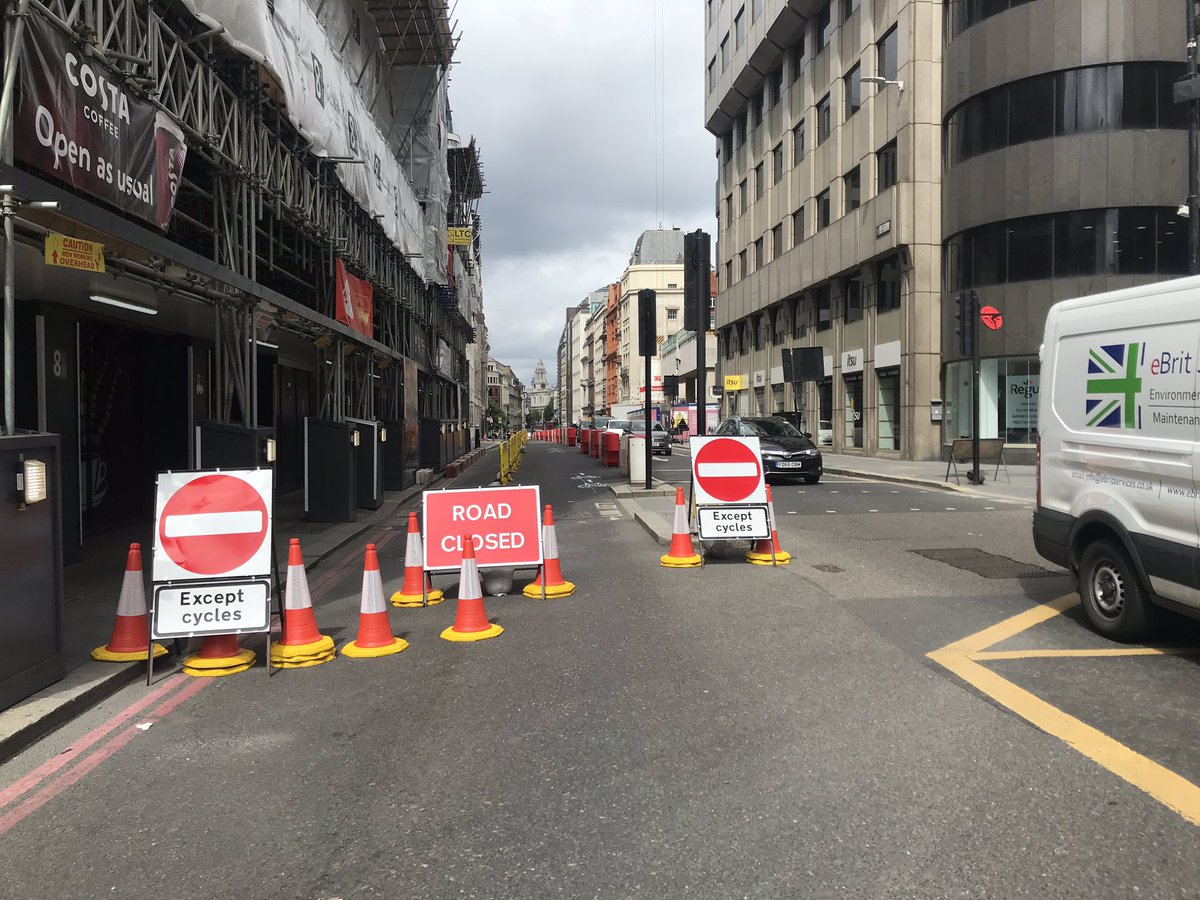
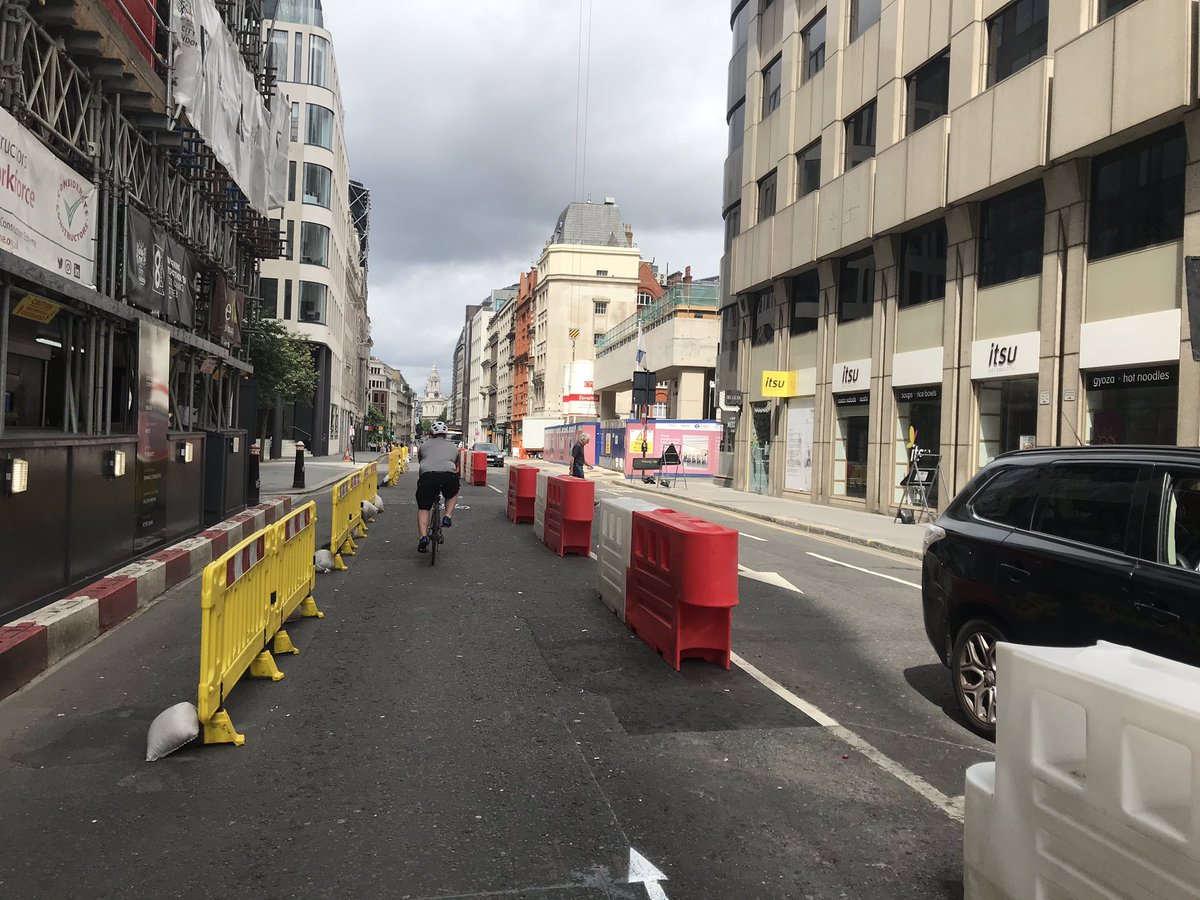
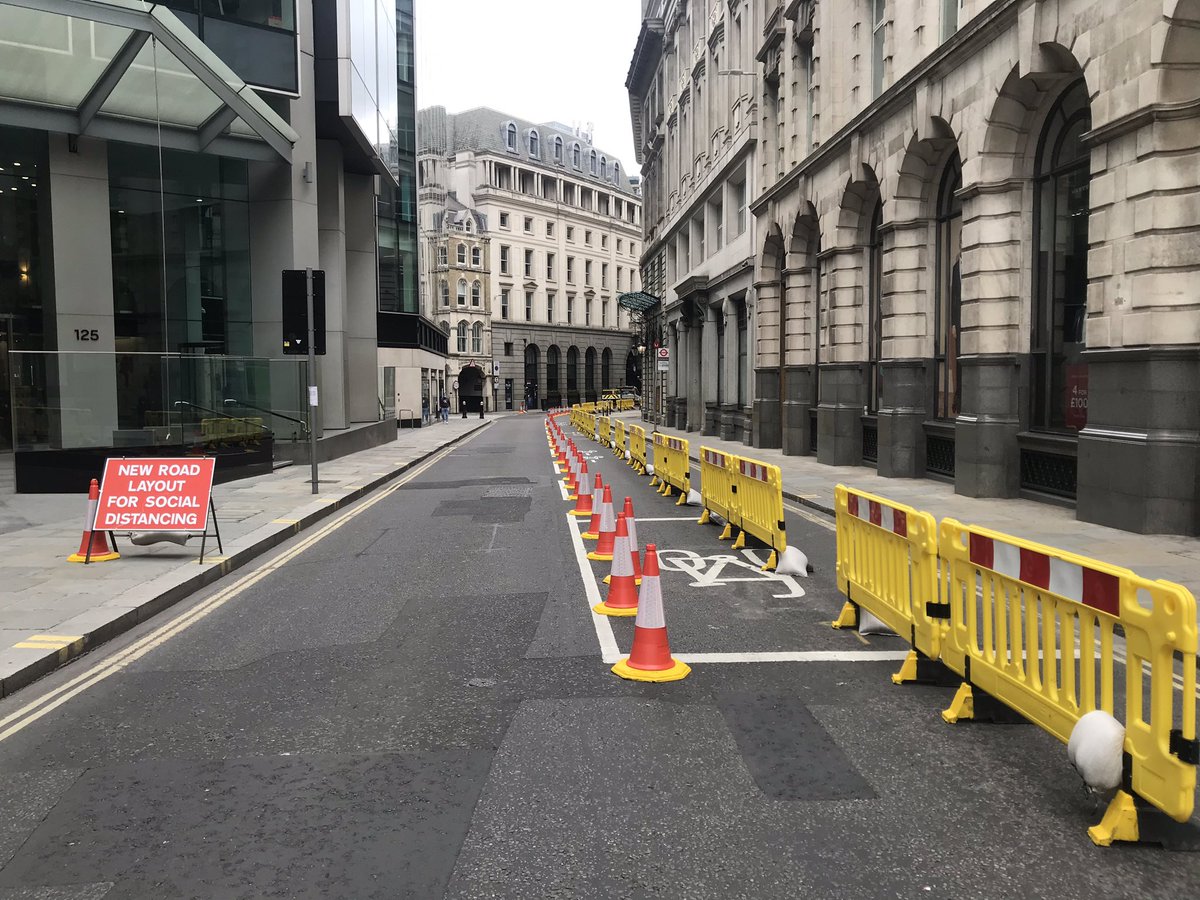
I’ve saved the best for last, which is the wonderful bus and cycle only London Bridge. Felt surreal to be able to stop on the bridge, not be chocked by fumes and noise and take in the view of the shard 



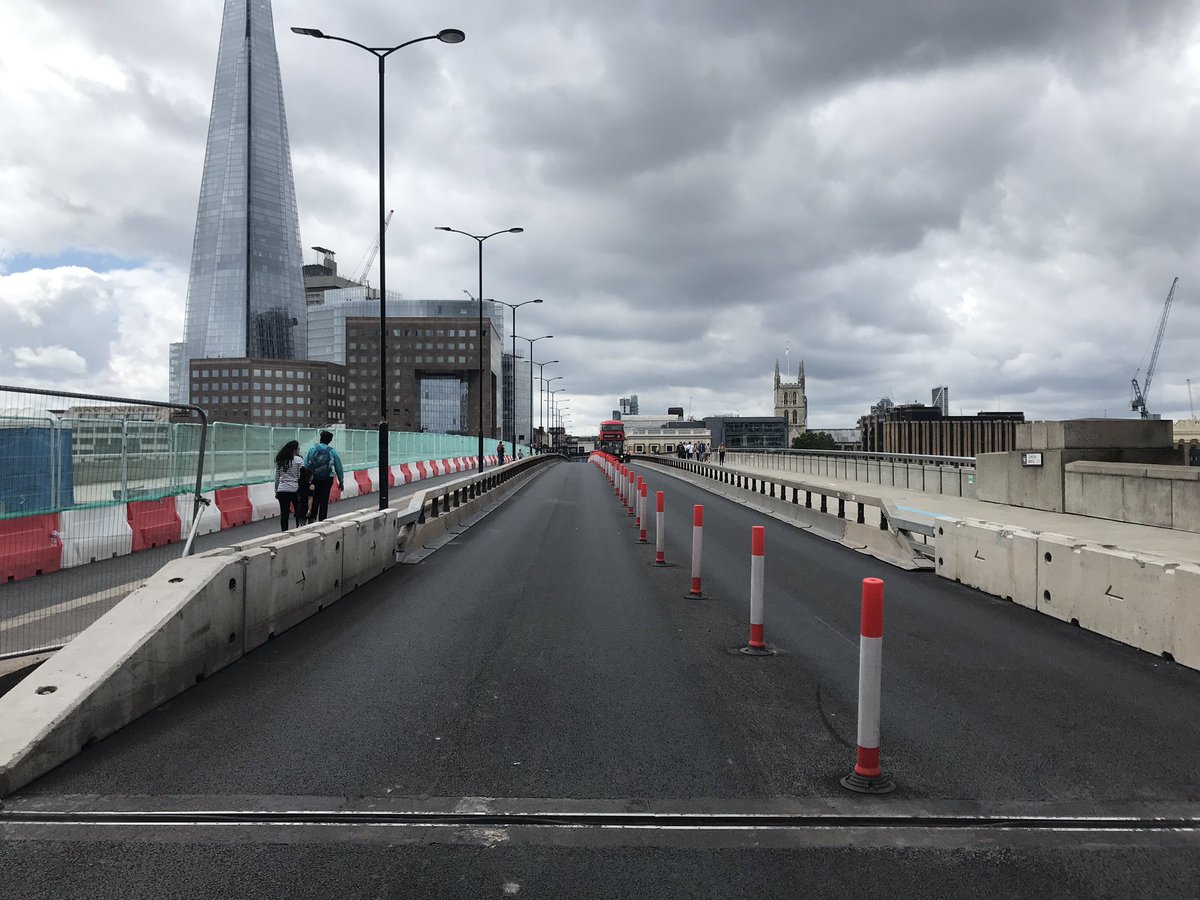


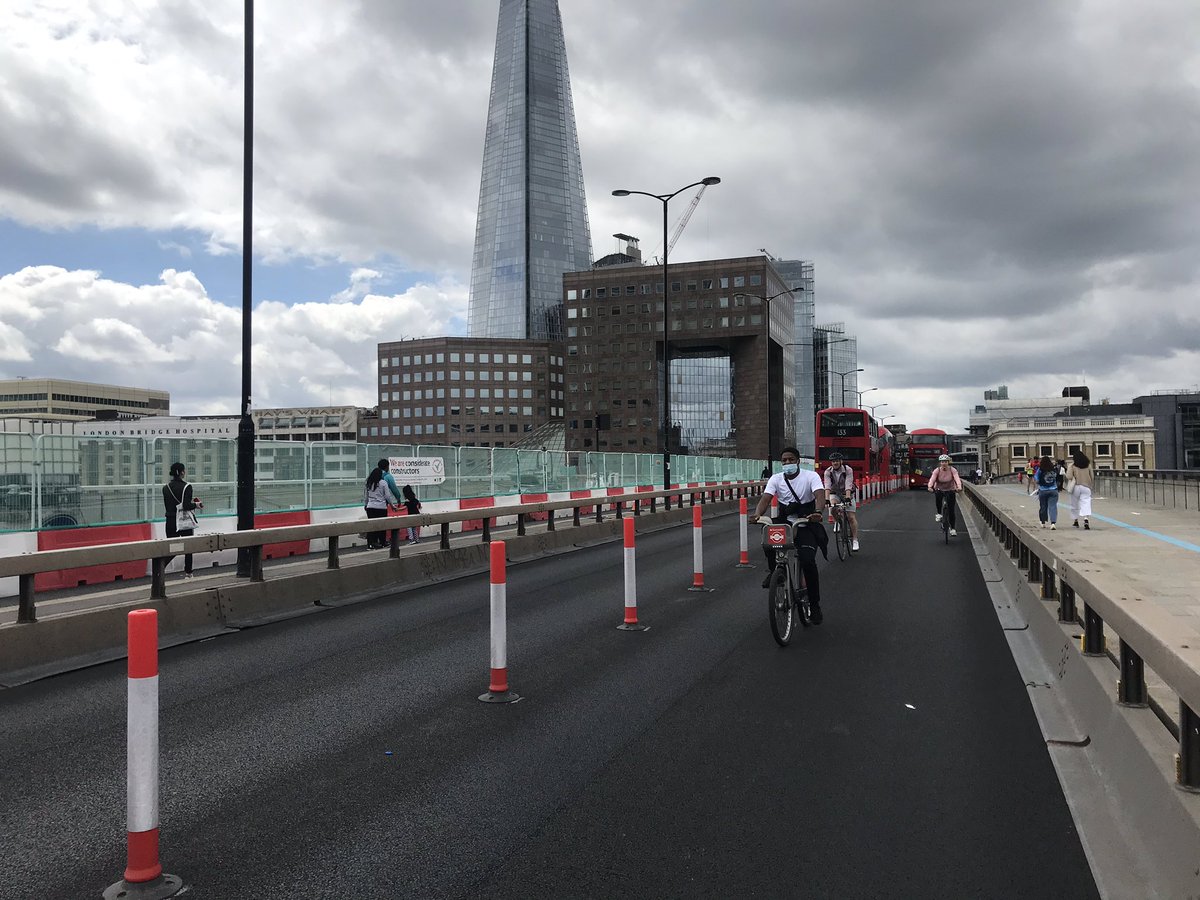
All kinds of people walking & cycling, with buses not being held up by other vehicles. A great example of how to respond when capacity is constrained (by lane reduction or physical distancing): prioritise the most equitable, space efficient modes 




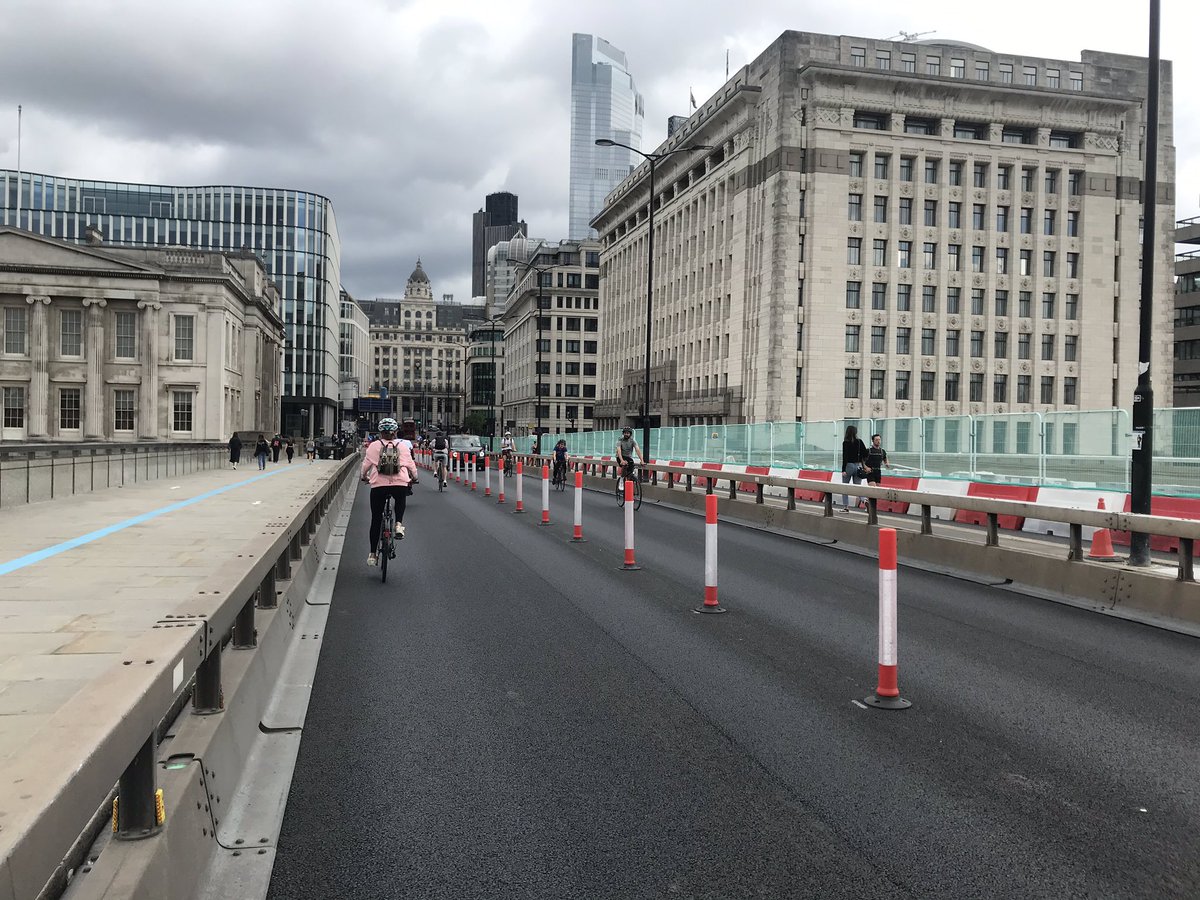
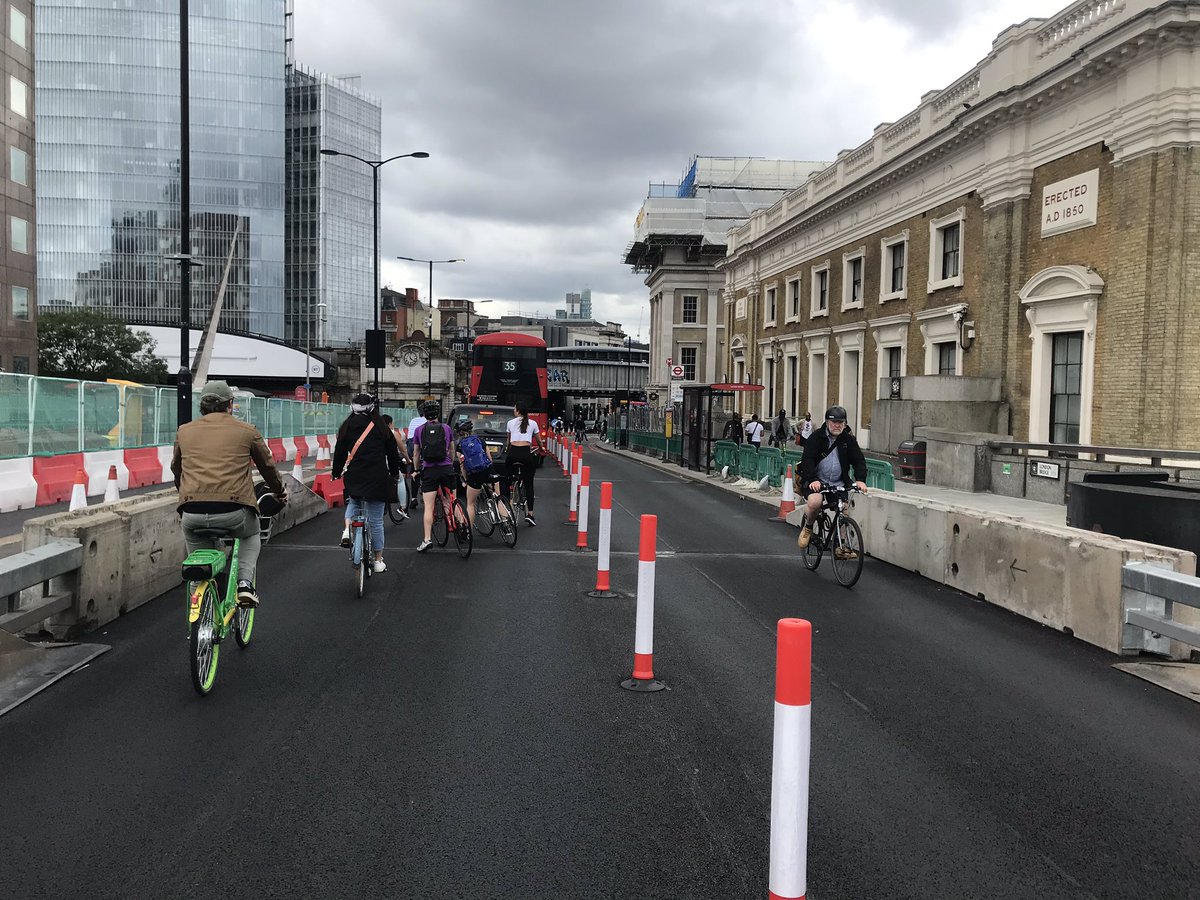
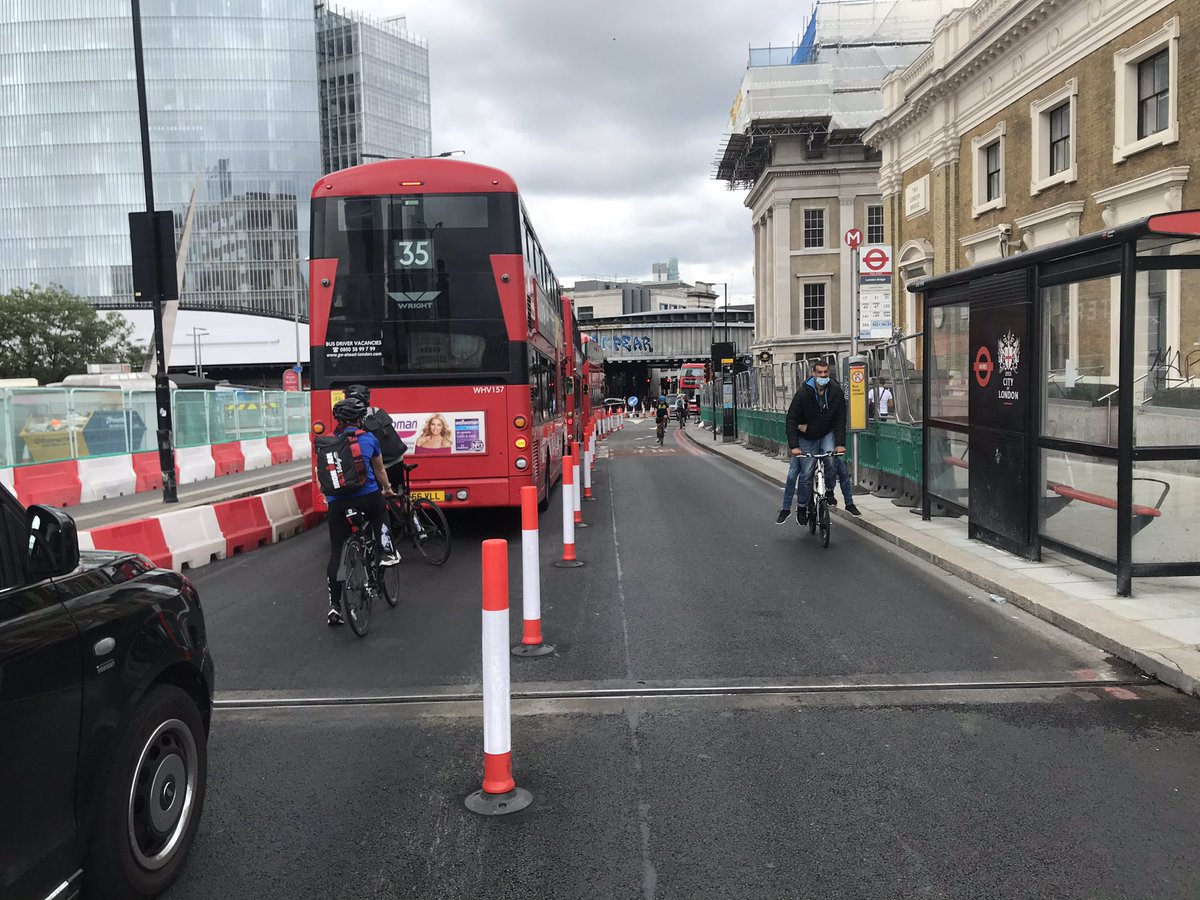
• • •
Missing some Tweet in this thread? You can try to
force a refresh







